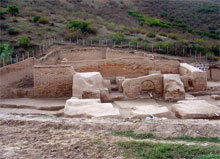Scientists hope to learn more about climate changes here on Earth by studying Venus. A prototype balloon could eventually study the planet's surface and examine its atmosphere and the bizarre winds and chemistry within it. A team of JPL, ILC Dover and NASA Wallops Flight Facility engineers designed, fabricated and tested the balloon.

|
| ©ESA
|
| Scientists believe the Venus balloons could also help us learn more about climate changes here on Earth. "Venus is a place where global warming has gone amuck," Hall said. "It's about the same size as our planet, but the surface is about 900 degrees Fahrenheit, and we want to find out why."
|
Slightly smaller than Earth, Venus is often regarded as Earth's sister planet. Both have similar densities, chemical compositions and gravities. However, its atmosphere is nearly 100 times thicker than Earth's, which causes blazing temperatures at the surface. By flying in the cool skies above Venus, the balloons would avoid that environment.
